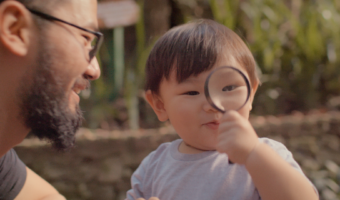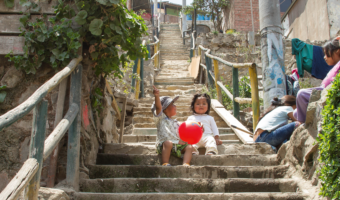Cities around the globe have experienced unprecedented times in 2020 as Covid-19 drastically changed every aspect of urban life. The closure of schools, daycare centres and playgrounds challenged the work of NACTO’s Global Designing Cities Initiative, through the Streets for Kids programme, to improve how cities meet the needs of babies, young children, and their caregivers. However, it is also prompting a widespread reimagining of where and how play, learning and social connection occur for the youngest members of society.
While there are many unknowns about the long-term impacts of the pandemic on streets and public spaces, we know they will remain the lifeblood of our communities and the conduits to accessing cities. Our streets can and should be reimagined and redesigned. The need to allow for physical distancing has forced us to rethink how we move within cities. It has emphasised the importance of neighbourhood planning – ensuring that key destinations and critical services are provided within close proximity to people’s homes, which is especially important for caregivers with babies and toddlers.
The pandemic has also highlighted systemic inequities, with the most vulnerable communities bearing the brunt of suffering. Cities cannot afford to return to the inequitable, dangerous and unsustainable patterns of the past. As city leaders, transportation officials, planners and designers, our mission must be to help shape a better future for the next generations. The need for change is urgent. But change can be hard and scary, and take a long time.
That’s why our team at NACTO and the Global Designing Cities Initiative created Streets for Pandemic Response & Recovery, to collect emerging practices and actions that cities have taken in response to the pandemic (NACTO, 2020). Drawing experiences from Milan to Bogotá, Amsterdam to Auckland, this new resource offers cities quick, easy, low-cost strategies to respond to the most pressing issues of the Covid-19 pandemic and, when ready, to help the city begin to recover in a more resilient way. It will enable cities to learn from their peers and plan what might work best for them based on their local context, regulations and resources.
Many of the actions will improve cities for babies, young children and caregivers in particular. For example, tools such as paint, cones and barriers – alongside political will and local action – can help cities quickly create widened pavements and new bike-and-roll lanes that allow safer walking and cycling in a physically distanced way. The resource explains how ‘Slow Streets’, ‘Open Streets’ and ‘School Streets’ can offer new opportunities for daily exercise, recreation, learning, play, and physically distanced social connection.
As economies slowly reopen, restaurants and local businesses can temporarily expand into the roadway to operate within physical distancing requirements. In vulnerable communities, the street can provide a place for delivering critical services to families, such as food, water, sanitation, and medical testing or treatment. Dedicated transit lanes and improved stops and service frequency can support essential workers to use public transport safely, with speed reduction strategies ensuring vehicles are moving at safe speeds to minimise danger to caregivers crossing the road with young children.
Now, more than ever, urban streets need to serve more people and support more functions within the same limited space. Our hope is that cities can see their streets in a new light. They can help fight the simultaneous crises of climate change, road safety and systemic inequities. They can promote physical and mental health, well-being and caring for each other. They can support our local economies and communities to recover sustainably. And they can invite social connections, learning, love and joy – especially for young children, but for others too. It’s time for our streets to facilitate a new normal that we can be proud to pass on to the generations to come.
References can be found in the PDF version of this article.



